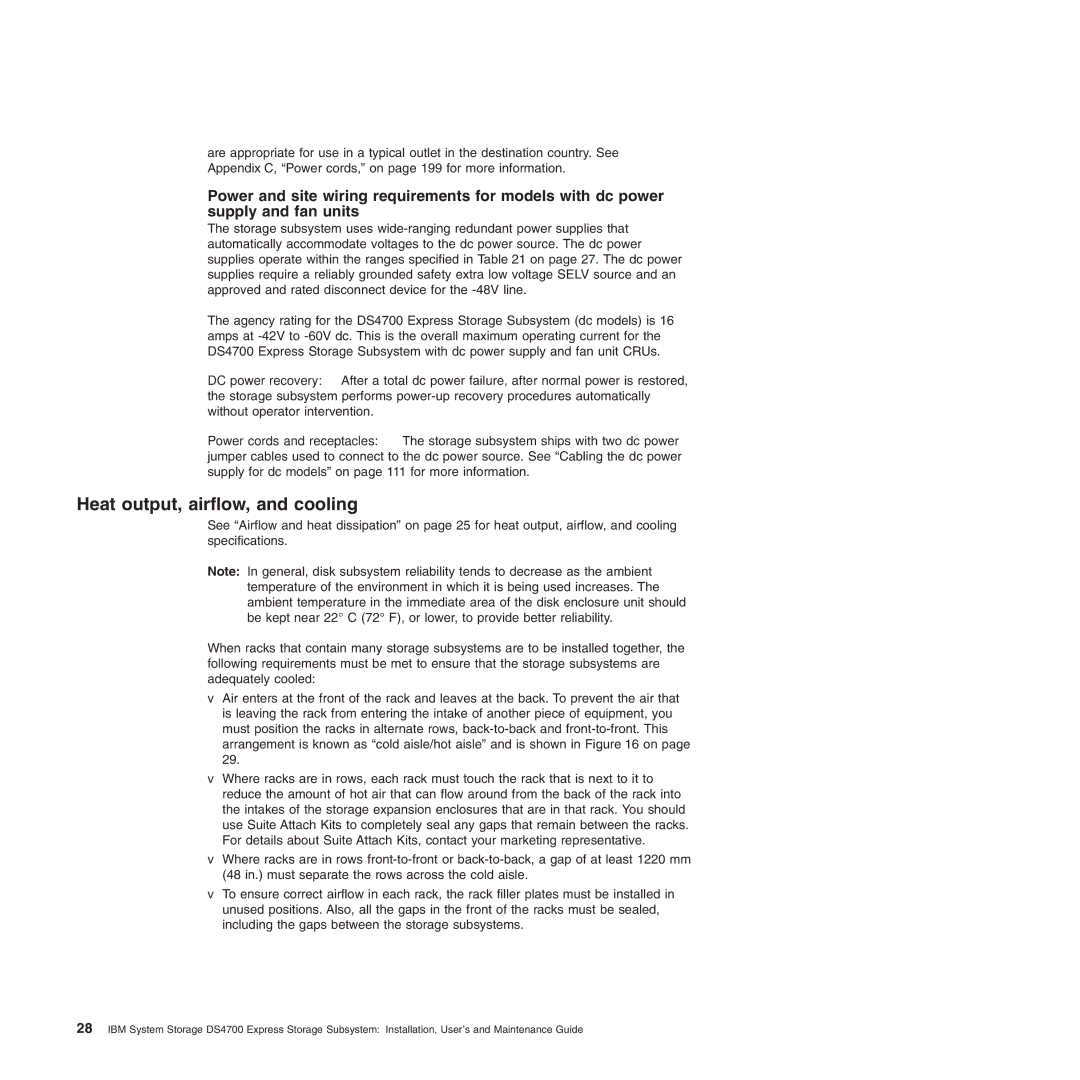are appropriate for use in a typical outlet in the destination country. See Appendix C, “Power cords,” on page 199 for more information.
Power and site wiring requirements for models with dc power supply and fan units
The storage subsystem uses
The agency rating for the DS4700 Express Storage Subsystem (dc models) is 16 amps at
DC power recovery: After a total dc power failure, after normal power is restored, the storage subsystem performs
Power cords and receptacles: The storage subsystem ships with two dc power jumper cables used to connect to the dc power source. See “Cabling the dc power supply for dc models” on page 111 for more information.
Heat output, airflow, and cooling
See “Airflow and heat dissipation” on page 25 for heat output, airflow, and cooling specifications.
Note: In general, disk subsystem reliability tends to decrease as the ambient temperature of the environment in which it is being used increases. The ambient temperature in the immediate area of the disk enclosure unit should be kept near 22° C (72° F), or lower, to provide better reliability.
When racks that contain many storage subsystems are to be installed together, the following requirements must be met to ensure that the storage subsystems are adequately cooled:
vAir enters at the front of the rack and leaves at the back. To prevent the air that is leaving the rack from entering the intake of another piece of equipment, you must position the racks in alternate rows,
vWhere racks are in rows, each rack must touch the rack that is next to it to reduce the amount of hot air that can flow around from the back of the rack into the intakes of the storage expansion enclosures that are in that rack. You should use Suite Attach Kits to completely seal any gaps that remain between the racks. For details about Suite Attach Kits, contact your marketing representative.
vWhere racks are in rows
vTo ensure correct airflow in each rack, the rack filler plates must be installed in unused positions. Also, all the gaps in the front of the racks must be sealed, including the gaps between the storage subsystems.
28IBM System Storage DS4700 Express Storage Subsystem: Installation, User’s and Maintenance Guide
